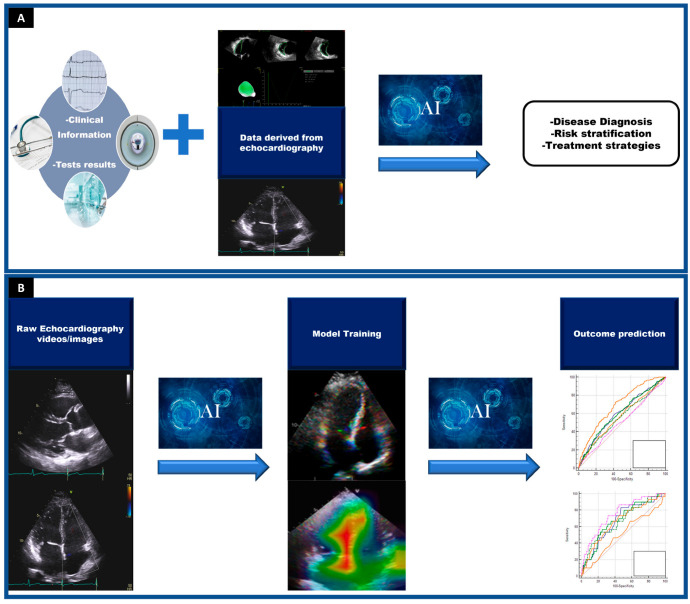Figure 1.
Different applications of artificial intelligence (AI) in echocardiography. Panel (A). One of the main advantages of using echocardiography in machine learning models is that these algorithms can combine data derived from echocardiography with clinical information and/or other test results to develop predictive tools with high accuracy to enhance diagnosis, risk stratification, and therapeutic strategies. Panel (B). Artificial intelligence can use raw echocardiography images/videos to automatically provide structural or functional measurements but also to identify disease states. This ability is based on AI’s capacity to automatically analyze features from images that may be too subtle to be detected by the human eye. Following training, the machine learning algorithm should be able to recognize cardiac structural and functional patterns or specific diseases. (ROC) curves are usually used to show how well the risk prediction models discriminate between patients with and without a condition.

